Introducing – Ochs Und Junior Perpetual Calendar, the essence of simplification, a QP with 9 additional parts (specs & price)
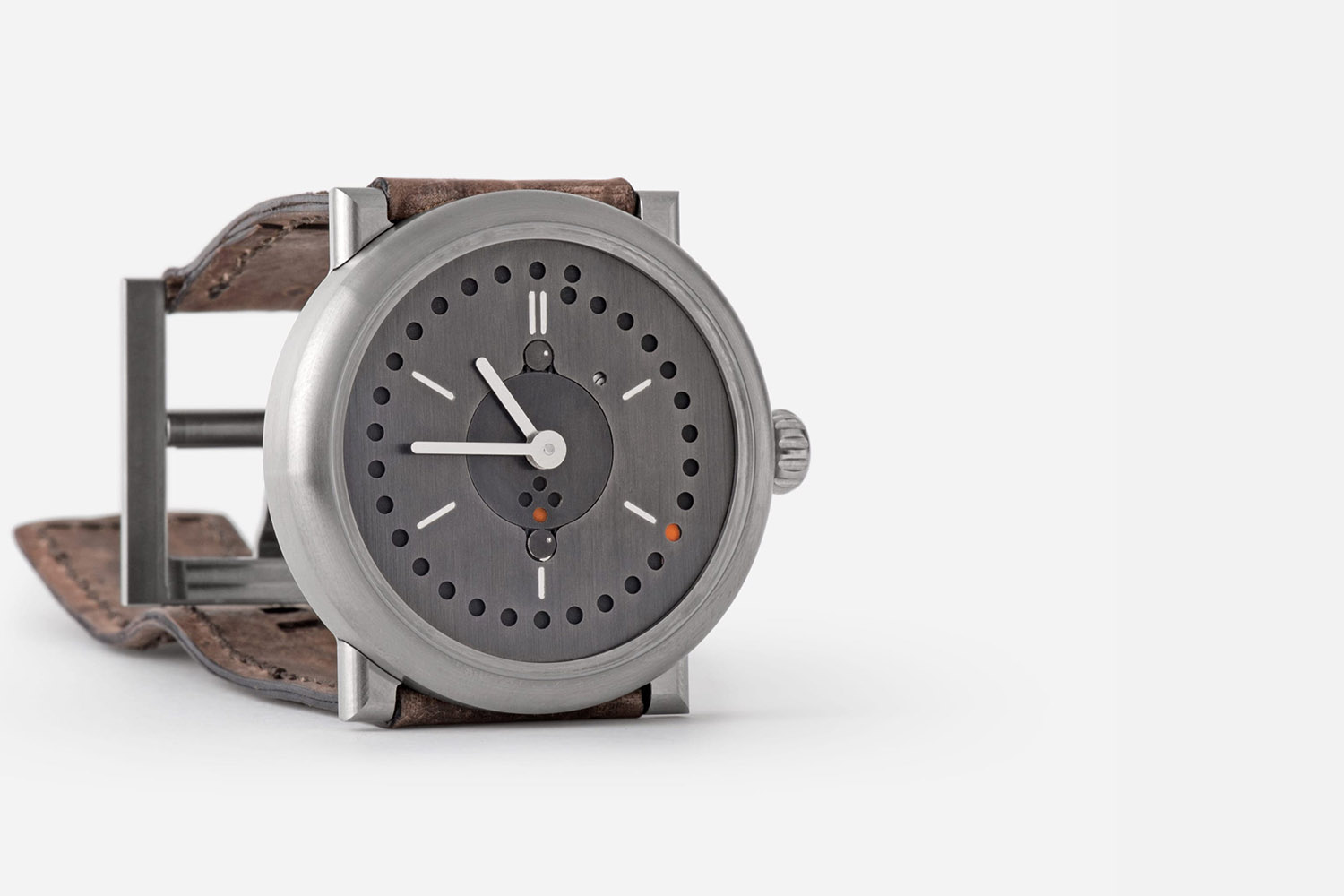
If there’s one word to keep in mind with Ochs Und Junior, it’s simplicity. Usually, simplicity in things means less attraction (we all love complexity). in watchmaking especially, we want complications. But with Ochs Und Junior, we’re talk about Ludwig Oechslin, so-to-say the pope of simplicity in complications. In fact, simplifying a complication is not a draw. It’s even more complex than doing it with dozens of parts. Besides showing an intelligence of conception, it even makes a mechanism more reliable and possibly more precise. That’s what the brand did with their annual calendar requiring 3 moving parts (!), or their extremely precise moon-phase with 5 parts. Today, they are doing it again, on the traditional and complex perpetual calendar. But theirs only have 9 additional parts… The Ochs Und Junior Perpetual Calendar is the essence of simplification.
Traditionally, a perpetual calendar requires, let’s say, about minimum 50 parts, including the wheels, pinions, screws, levers or pivots that are used to actuate the hands and to make the calculation of leap years possible (and it can even go up to 180 or 200 parts for some). A perpetual calendar is complex. Complex to develop – many parts means many calculations and many adjustments to make them perfectly interact – complex to assemble – then again, the more parts, the more adjustments required – and complex to use – a QP, if not featuring a protection device, is fragile and sensitive to adjustments. Whatever the brand or the manufacture, whatever the solutions used, this is a rule… Well, it was a rule, as the new Ochs Und Junior Perpetual Calendar seems to be a little different, as only 9 parts are required to actuate the QP. In fact, that’s because one of the greatest living watchmakers, Ludwig Oechslin, is behind the conception of this movement. As a reminder, Mister Oechslin drove several projects at Ulysse Nardin, like the Freak (the first watch with silicium) or recently the Annual Calendar Chronograph with only 5 parts.
Since 2006, at Ochs Und Junior, Oechslin expresses his vision of simplification. Everything he creates is done with one idea in mind: the less parts, the more reliable and the easiest to adjust a watch is. After applying this concept on the Twin-Time-Zone, the Date, the Annual Calendar (3 moving parts… Yes, 3!) and the moon-phase (with 5 parts, Oechslin managed to have one of the most precise moon phase indications of the world), he now plays with the perpetual calendar. using as a base a Ulysse Nardin Calibre UN-118, the Ochs Und Junior Perpetual Calendar only adds 9 parts and modifies 3 other to display a perpetual calendar, meaning a watch that does not require manual adjustment until 2100. in the following video, we can see Sandra Flück, watchmaker at Ochs Und Junior, assembling the entire module. And from right to left, here are the 3 modified parts (with *) and the 9 additional parts:
- Dial*
- 12 hour ratchet wheel*
- Date disk*
- Baseplate for perpetual calendar mechanism
- Date ratchet wheel
- Bridge
- Month ratchet wheel
- Another bridge
- In-between wheel
- Month disk
- 4 year ratchet wheel
- Additional tooth
How is that possible? First of all, the conception is done in a way that each part is an answer to multiple problems – and not to be used for on single function. Then, the conception is entirely different, compared to a traditional perpetual calendar. In a normal QP, a programmed wheel, usually with 48 notches (for the entire cycle of 48 months, including one leap year) gives information to the rest of the movement, in order to adjust to the right date, day and month. All these indications are connected one to each other by a central lever called the “grand levier”. Here, the system of the Ochs Und Junior Perpetual Calendar only relies on gears – no levers, no springs, no complex programmed wheels. Ludwig Oechslin’s solution, which goes back to his work done at Ulysse Nardin, is to use rotating gears only instead of levers and wheels. Only rotating parts also solves another great issue: reliability. Usually, perpetual calendars must be adjusted by recessed pushers and the crown, but only forward (impossible to go backward, or you’ll damage the movement). Because Ludwig Oechslin’s mechanism only uses rotating gears, they keep turning all the time and then, they can be adjusted forward and backward, with no damage to the movement. Then, everything is done via the crown and only the crown.
Then, there’s a second point of simplification in this watch. Just like in every watch of Ochs Und Junior, the display is extremely clean. While almost all watches relies on hands or discs to display an indication, in Ochs Und Junior watches both the mechanism and the display are actually melted. The mechanism is the indication. For instance, the date is indicated by a red dot, which is simply painted on the date gear. As simple as that. So, this Ochs Und Junior Perpetual Calendar is simple to assembled, reliable and finally easy to use on a daily basis, as protected. It’s properly impressive. That’s what you can call great engineering.
What about the display now. Well, with what we explained before, you can imagine the display to be as simple as the rest. And it is. The 30+1 holes around the perimeter of the dial display the date. The 10 minute markers serve as reference points. The small disc in the center of dial indicates the month. When the outermost perforation points to 1 o’clock, it is January. When the outermost perforation points to 2 o’clock, it is February. The month disk rotates clockwise. The 4 perforations in the month disk also show whether it is a leap year or a common year. When the outermost dot is orange, it is a leap year (366 days). When it is dark, it is a common year (365 days). Exactly the type of perpetual calendar you could explain in 5 minutes to your young nephew or grandmother. Finally, the Ochs Und Junior Perpetual Calendar features a power reserve. The small circle beneath 12 o’clock is the power reserve indicator. Full power (60 hours) is when the dot is beneath the rightmost 12 o’clock marker. Empty is when the dot is beneath the leftmost 12 o’clock marker.
For the rest, the Ochs Und Junior Perpetual Calendar is in the vein of the creations of the brand, with their typically hyper-clean, almost unfinished look. The case is a 42mm titanium pebble, with extremely simple lugs, and the dial is a piece of patinated metal just finished with a straight brushed pattern… and this is part of the pleasure of having a Ochs Und Junior, together with the possibility to customize every visual aspect. The brand is entirely transparent on the manufacturing process – the case is manufactured by Peter Cantieni in Hinwil, Switzerland, while the gear system, dial, hands, buckle and crown are manufactured by Helfenstein in Alpnach, Switzerland. Each perpetual calendar is hand-assembled and hand-regulated by Sandra Flück at the ochs und junior workshop in Lucerne. They expect to manufacture about 20 perpetual calendar watches this year.
Concerning the price, the watch will be retailed at 22,000 Swiss Francs (including 8% Swiss VAT) or 20,240 Swiss Francs (for export), and only available through the Luzern boutique or online here. Considering the ingenuity and the apparent simplicity (which hides a great complexity of development), we’d say that this price point is far from being excessive. Some large brands should take example. Impressive! More details about the watch, the brand and many videos and technical explanations to see here.
Specifications of the Ochs Und Junior Perpetual Calendar
- Case: 42mm, grade 5 titanium, sapphire crystal on the front
- Movement: base Calibre UN-118, internally developed QP module – automatic winding, power reserve of 60 hours – hours, minutes, date, months, leap year, power reserve
- Strap / clasp: strap on choice


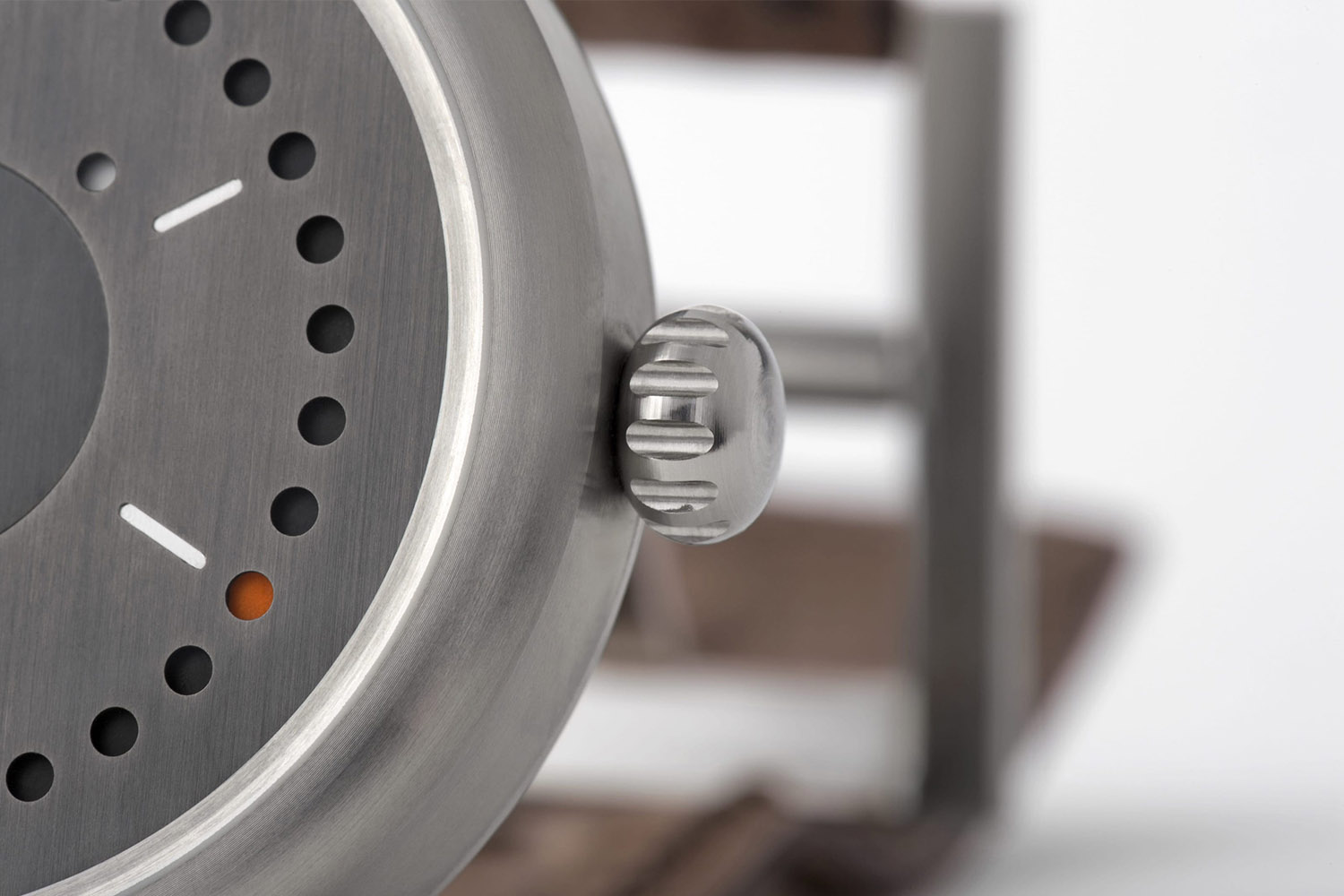
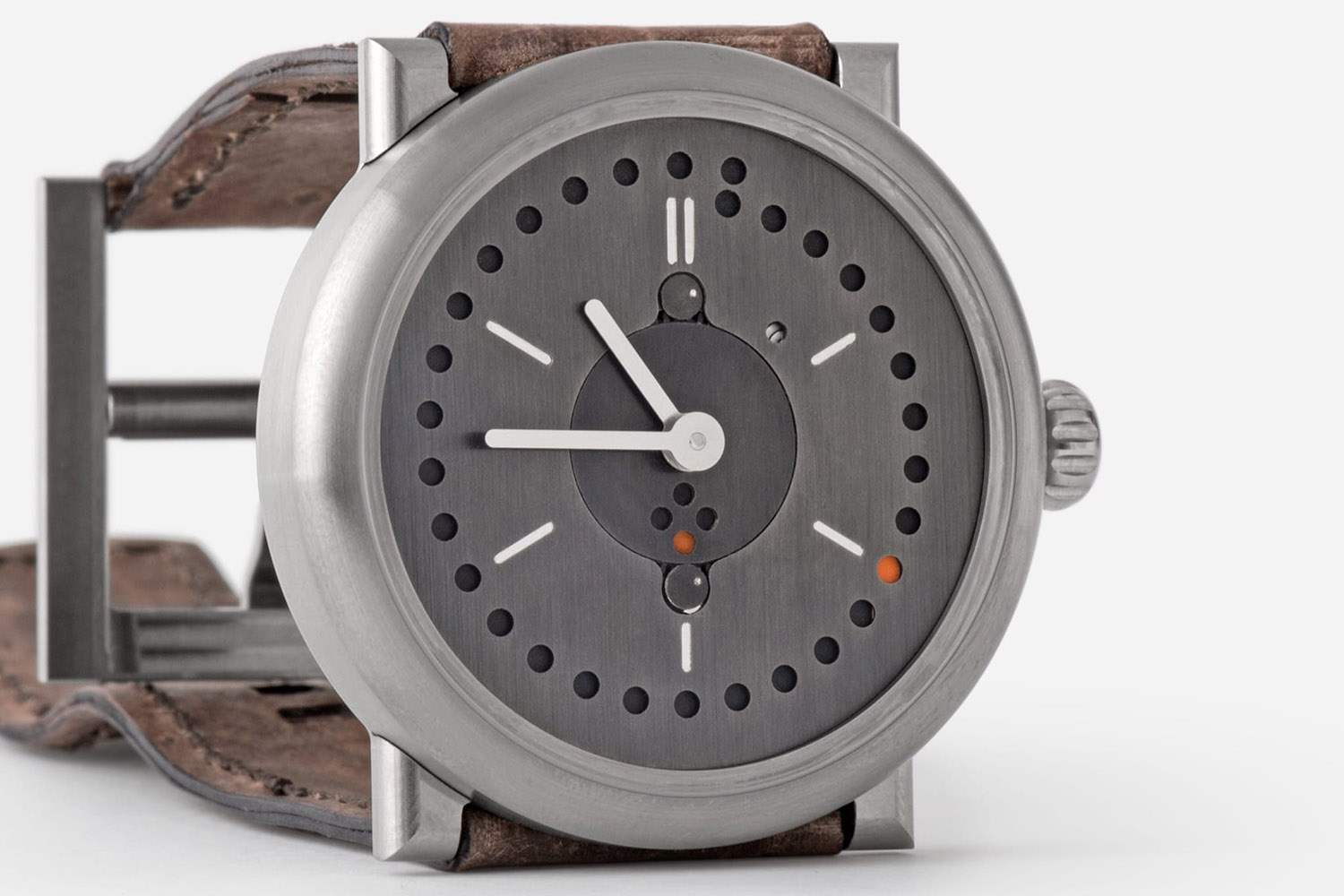
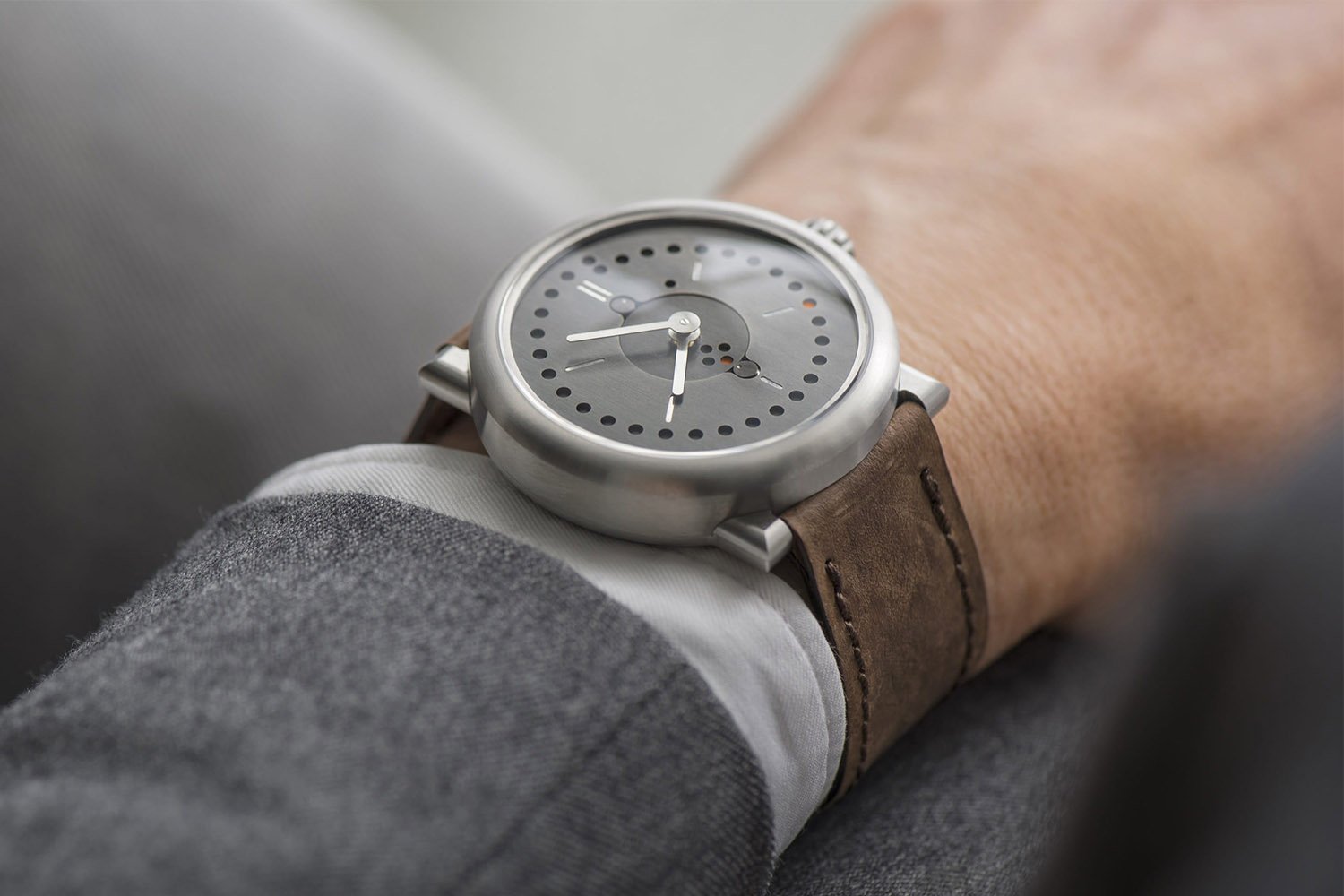
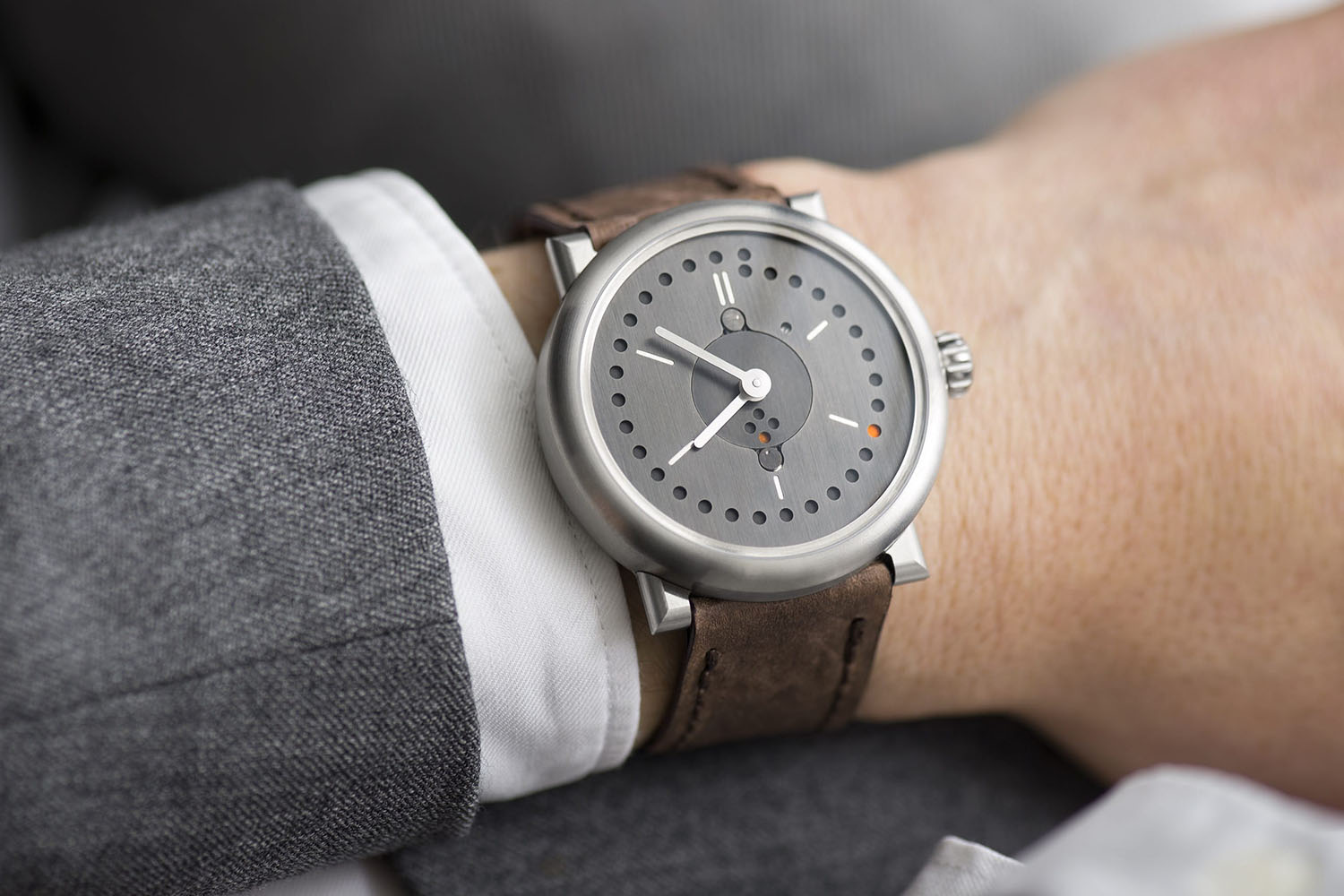



4 responses
I’m sure many may disagree with what i’m about to say.
But if Montblanc (MB) and Frederique Constant (FC) can come up with Perpetual Calendar (PC) pieces which are both way easier to read and thinner (I won’t comment on the design style, since I find this OUJ interesting too and different from MB/FC), and cost less than USD15,000, I don’t understand why OUJ are charging that sort of price for such a thick modular watch.
MB’s PC is modular, and FC’s PC is in-house. There is no justification on OUJ’s price here. People will only buy this PC just because they like OUJ’s design elements, which is a really niche market, considering the layman who will never really heard of this brand. And watch-enthusiasts who’re on a budget, like myself, would buy the MB/FC. Else, other watch enthusiasts will just fork out a little more for PCs from other more reputable luxury brands (GO/JLC/Blancpain/IWC-if you like huge watches).
And, I cringed a little when I watched the watchmaker using that tweezers to install the pinion…
Agreed with MontY’s comment above
This piece is interesting. I like the concept to explore simple solution on complex problems.. The other PC in the market are, well, a bit boring..
Disagree with Monty and Richard!
The whole point of this unique and enticing brand is their solid, adaptable production through which all aspects are personalised in a manner no other horologist can match.
See these amazing time pieces for what they are, appealing and enticing.